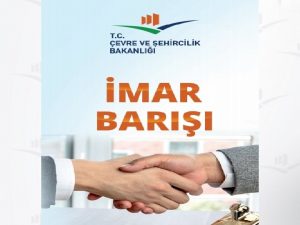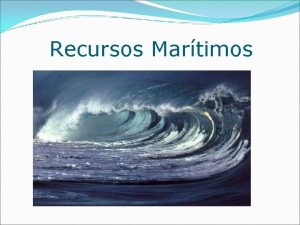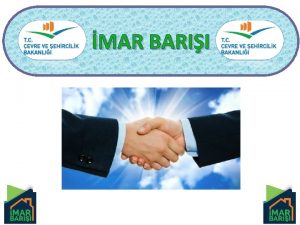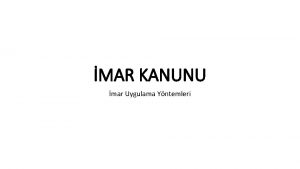Mar 2019 doc IEEE 802 11 190365 r


![Mar 2019 doc. : IEEE 802. 11 -19/0365 r 0 Introduction • PAR [1]: Mar 2019 doc. : IEEE 802. 11 -19/0365 r 0 Introduction • PAR [1]:](https://slidetodoc.com/presentation_image/3e6c2dc6fcf5174a0b2aed52ddab140c/image-3.jpg)



![Mar 2019 doc. : IEEE 802. 11 -19/0365 r 0 References [1] TGbd, “Project Mar 2019 doc. : IEEE 802. 11 -19/0365 r 0 References [1] TGbd, “Project](https://slidetodoc.com/presentation_image/3e6c2dc6fcf5174a0b2aed52ddab140c/image-7.jpg)
- Slides: 7

Mar 2019 doc. : IEEE 802. 11 -19/0365 r 0 Consideration on Positioning with 802. 11 bd Date: 2019 -03 -12 Authors: Submission Slide 1 Stephan Sand, German Aerospace Center (DLR)

Mar 2019 doc. : IEEE 802. 11 -19/0365 r 0 Abstract 802. 11 mc contains Fine Timing Measurement (FTM) Protocol for round trip ranging and positioning. 802. 11 az proposes some improvements on FTM such as NDP SU/MU ranging, trigger based ranging, AOA/AOD measurements, … What are the implications for 802. 11 bd positioning mode? This is a discussion document so feedback highly welcome. Submission Slide 2 Stephan Sand, German Aerospace Center (DLR)
![Mar 2019 doc IEEE 802 11 190365 r 0 Introduction PAR 1 Mar 2019 doc. : IEEE 802. 11 -19/0365 r 0 Introduction • PAR [1]:](https://slidetodoc.com/presentation_image/3e6c2dc6fcf5174a0b2aed52ddab140c/image-3.jpg)
Mar 2019 doc. : IEEE 802. 11 -19/0365 r 0 Introduction • PAR [1]: • “This amendment defines at least one mode that achieves at least 2 times higher throughput” … “in high mobility channel environments at vehicle speeds up to 250 km/h (closing speeds up to 500 km/h); ” • “this amendment defines procedures for at least one form of positioning in conjunction with V 2 X communications” • “This amendment shall provide interoperability, coexistence, backward compatibility, and fairness with deployed OCB (Outside the Context of a BSS) devices. ” • Use Case (UC) baseline document [2]: • UC 5 Vehicular Positioning & Location • UC 8 Train-to-Train • UC 9 Vehicle-to-Train Submission Slide 3 Stephan Sand, German Aerospace Center (DLR)

Mar 2019 doc. : IEEE 802. 11 -19/0365 r 0 Current Situation V 2 X Proprietary solution [3] with road side units (RSUs) exists • RSUs generally broadcast their position information in either, • Wave Service Announcements (WSA) (IEEE 1609) • Geonetworking messages (ETSI ITS) • Ranging measurements • Enhanced signal processing algorithms to • improve robustness with regard to multipath effects • achieve range accuracy in the order of nanoseconds Time-of-flight even in multipath channels • RSUs honor SIFS timing: IEEE 802. 11 devices should respond to Unicast packets with a short ACK at a very specific period of time after receipt of Unicast packet. 32µs@10 MHz Submission Slide 4 Stephan Sand, German Aerospace Center (DLR)

Mar 2019 doc. : IEEE 802. 11 -19/0365 r 0 Fine Timing Measurement (FTM) Protocol According to [4] FTM • Time to obtain range ~ 30 ms • Position: 3 ranges needed 100 – 120 ms • 50 km/h=13. 9 m/s 0. 4 m moved while obtaining one range 1. 4 m - 1. 7 m moved while obtaining three ranges • ACK on FTM Measurement: a. SIFSTime (32µs@10 MHz) • Default accuracy ± 1. 3µs 390 m error • 0. 1% error (1/3 of sample) 10 m error Submission Slide 5 Stephan Sand, German Aerospace Center (DLR)

Mar 2019 doc. : IEEE 802. 11 -19/0365 r 0 Discussion • 5. 9 GHz mode: • • • V 2 X (X=V, I, P, T) ranging? Limits of round-trip ranging for high mobility? One way ranging useful? Multi-antenna approaches? Bandwidth and a. SIFSTime? 802. 11 az features [5]? Quality indicators for higher layer(data fusion: Channel impulse response, clock parameters, etc. ? Can we reuse existing messages or do we need dedicated 11 bd ranging message? Simulation and channel models [6]? • 60 GHz mode: ranging mode (large bandwidth high ranging accuracy)? Submission Slide 6 Stephan Sand, German Aerospace Center (DLR)
![Mar 2019 doc IEEE 802 11 190365 r 0 References 1 TGbd Project Mar 2019 doc. : IEEE 802. 11 -19/0365 r 0 References [1] TGbd, “Project](https://slidetodoc.com/presentation_image/3e6c2dc6fcf5174a0b2aed52ddab140c/image-7.jpg)
Mar 2019 doc. : IEEE 802. 11 -19/0365 r 0 References [1] TGbd, “Project Authorization Request (PAR)”, IEEE 802. 11 -18/0861 r 9 [2] NGV SG, “Use Case Baseline Document Approved By SG”, IEEE 802. 1118/1323 r 2 [3] Cohda Wireless, “V 2 X-Locate Positioning Whitepaper”, https: //cohdawireless. com/wp-content/uploads/2018/08/Whitepaper_V 2 XLocate. pdf [4] L. Banin, et al. , “High-Accuracy Indoor Geolocation using Collaborative Time of Arrival (CTo. A) - Whitepaper”, IEEE 802. 11 -17/1387 r 0 [5] L. Chu, et al. , “NGV Ranging Discussion“, IEEE 802. 11 -18/1250 r 0 [6] P. Unterhuber, et al. , “Considerations on Vehicular Channel Models”, IEEE 802. 11 -19/0034 r 1 Submission Slide 7 Stephan Sand, German Aerospace Center (DLR)













